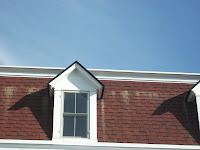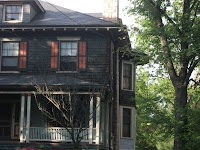DEFINITIONS
Plan- A plan shows the overall shape, as well as the layout of the interior and exterior of a house from a birds eye view
Elevation- a plan that shows a much more 3 dimensional view from ground level where you can see a 360 view of wall faces. Also get a better idea of height and widths of the house plan
Sections- different areas separated by walls
Silhouette- outlining shape of a housing structure
Flat- Also can be called "low pitch", when a roof is short or is close to the house structure
Gable- A style of roof where the two slopes join at a peak creating a triangular shape
Hipped- A style of roof where the two slopes are connected with a flat plain. It also is a style of roof that is a structure that sits on top of the house form.
Shed- a detached garage, or small structure from the house
Facade- the exterior of a house structure
Foundation- base of a house used to raise and protect the house from the underlying soil
Wall Systems- Describes what material and the how wall structures are made
Joinery- where two walls, or pieces of wood come together in a house structure
Masonry- layering of material to create a wall using pieces of material like brick and constructing a larger form with a connective material
Wall Cladding's- when wall systems are masked with a layer so you cant see the structure but they can sometimes give hint to what made the structure
Metal- used in building houses primarily in the 19th century because of the plentiful and inexpensive of sheet iron at the time. They require less underlying support
Shingle- thin wedge shaped triangles made from strong wood used to cover the structure of the roof.
Window- Wall openings that provide light and ventilation, they can also be decorative in shape and size but not functionally open able
Door- openings walls used to section off different parts of a house, from one another. Used for privacy
Trim- framework around doorways, wall corners, windows, and outside edges to hide the underlying masonry work
Chimney- used to ventilate smoke away from the inside of the house in fire places
Porch- outside (usually covered area) that makes the transition between the exterior and interior of a house.
COLUMNS
Corinthian Style
Ionic Style
















